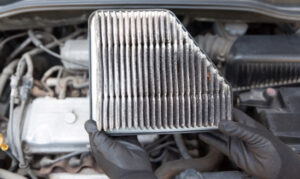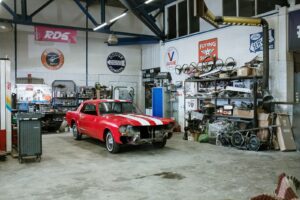Introduction
The Studebaker Avanti is a unique American sport sedan that was produced from 1962 to 1963. Despite its short production run, the Avanti left a lasting impression on the automotive industry and remains a popular classic car today.
Background of Studebaker
The Studebaker brand has a rich history dating back to 1852, when the Studebaker brothers started building covered wagons for settlers heading West. By the early 20th century, Studebaker had become one of the largest manufacturers of horse-drawn vehicles in the world. In 1902 the company produced their first gasoline powered car, but struggled to adapt to the changing times in the American Automotive Industry. This led to Avanti being the last model they produced before going bankrupt
Design and Body
The Avanti featured a sleek, aerodynamic design that was ahead of its time. It was designed by Raymond Loewy, one of the most famous industrial designers of the 20th century. He aimed to create a car that was both beautiful and functional, and the Avanti is a great representation of that. It was not built on a conventional body-on-frame platform, rather on a unitized body structure which made it lightweight and sporty.
Performance and Engine
The Avanti was powered by a V8 engine that produced between 280 and 315 horsepower. The car had a top speed of around 120 mph and could go from 0 to 60 mph in around 8 seconds. Studebaker offered a number of performance upgrades, including a supercharger option that could boost the engine’s power to up to 375 horsepower.
Interior and Features
The interior of the Avanti was luxurious and well-appointed, with high-quality materials and modern amenities. Standard features included leather seats, power windows, and air conditioning. The Avanti was also one of the first cars to be available with disc brakes, which provided superior stopping power.
Pros and Cons
One of the biggest pros of the Avanti was its unique, eye-catching design. Its aerodynamic shape and sleek lines made it stand out from other cars on the road, and it remains a popular classic car today. The performance and engine options were also strong points of the Avanti. On the other hand, the cons of Avanti mainly came from the fact that it was produced by a company that was struggling financially. With limited production numbers and lack of marketing, the Avanti never reached the sales numbers it deserved. Also, it was quite expensive for its time which made it out of reach for most car buyers.
Conclusion
The Studebaker Avanti was a unique and innovative car that pushed the boundaries of what was possible in automotive design. Its sleek lines and aerodynamic shape were ahead of its time, and its luxurious interior and powerful engine made it a true sport sedan. Despite the limitations of being produced by a company in financial difficulty, Avanti’s legacy remains as an iconic representation of American Automotive Industry. Even today, it remains a popular classic car and a valuable collector’s item.










